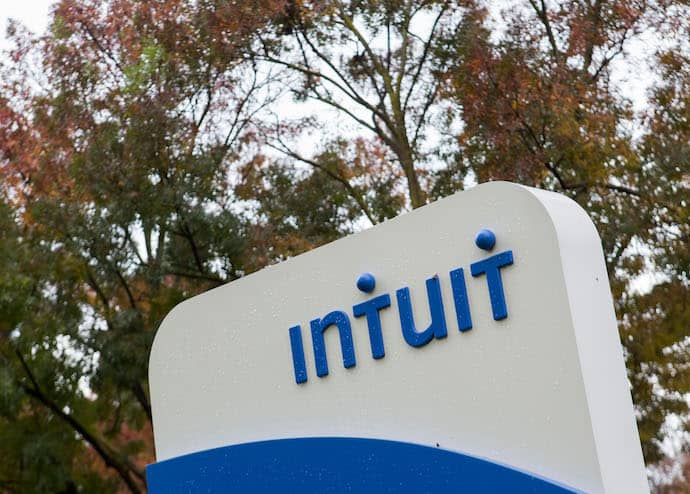Intuit's Director of Data Science speaks with InformationWeek about how the company's data operations have grown and evolved from just a few data scientists trying to sell executives on the value of data projects to becoming an AI-driven platform company.

When Diane Chang began working at Intuit, maker of Turbo Tax and Quick Books, more than a decade ago in 2009 as a data scientist, there were only a few other people performing that role at the company. Being a data scientist back then reminded her of a time when she had worked for a consulting firm.
“We had to convince people that they should work with us, and that they’d want to work with us, and that we could help provide value. There was a lot of selling initially and explaining and describing what we could do,” she says.
“Now it’s the opposite. There’s more demand than there is supply for data scientists.”
Chang, now director of data science at the company, provided an inside view into how Intuit is leveraging data science today. The company says it has evolved into an AI-driven platform company. Chang provided insights into the business trends have impacted the company and what data science trends are getting the attention of the C-suite.
Supporting Small Businesses’ Pivot to Online Sales
One of the major business trends that has impacted Intuit’s business customers over the past few years, unsurprisingly, is the COVID-19 pandemic.
As a provider of accounting software, Intuit was looking for a way to help these customers navigate their way through a whole new set of challenges. For instance, some were selling online, possibly for the first time, and selling through several different online channels -- maybe the Amazon marketplace, maybe Etsy, or maybe another online option.
While each of these channels may provide data analytics and reports, there was no way for customers to see a single report of activity across all channels, from online to traditional stores.
One of Intuit’s initiatives has been to create reports for these customers that can consolidate all these channels and activities into a single view.
“How do you keep track of all your invoices and your inventory and make sure you’ve got all your deliveries sent out in a timely manner?” Chang asks. “We’re just trying to make that super simple for the customer so that everything integrates easily into our products, and they can get an overall view of everything.”
While that was already something that Intuit had been pursuing, the pandemic was a catalyst for the company” to double down on that and try to make the lives of small business owners easier when they are selling online in particular,” says Chang.

Diane Chang, Intuit Director of Data Science
Responsible AI
A new focus within Intuit’s own data operation is increased attention to the concept of “responsible AI.” Chang says that this means an approach of no harm and setting out principles and standards to ensure that approach.
To implement it, the company has created a cross-functional team of executives including Chang, the CTO, the chief data officer, and the chief legal counsel, who meet every 4 to 6 weeks for a discussion of Intuit’s policies on the questions of the day.
“We want to make sure that we are using AI in a way that’s not harmful to anybody and that actually helps people,” Chang says. “It’s an area where there’s been a lot more attention lately.”
One example is explainability, according to Chang. Machine learning and deep learning create algorithms that are like black boxes. People can see what goes into them and what comes out of them, but the way that the algorithms have arrived at their conclusions isn’t always clear. Because of that there’s a potential that unrecognized bias may have been introduced, or some other defect that makes the outcome invalid and ends up impacting people in a negative way.
“We’ve declared that every model at Intuit has to have some form of explainability,” Chang says. The greater attention to explainability has also enabled closer scrutiny of models. When data scientists take a closer look, they may have found that a data pipeline has become corrupted because of a format change in the data from a third-party provider, or maybe there has been some data drift, or some other minor but impactful change.
“The explanability requirement has enabled us to debug models as well,” Chang says.
Data Organization Growth
But while that product improvement focus has remained the same, the data organization has grown significantly over the years, and perhaps one of the biggest changes was about 5 years ago when Intuit hired its first Chief Data Officer, Ashok Srivastava, who oversees all the components of data innovation at Intuit including data science, machine learning, data management, and data governance. The data organization that started with just a few data professionals has grown to hundreds of data scientists, machine learning engineers, data management professionals, and other data pros.
There are plenty of projects to keep these data pros busy, and Chang says the data organization now prioritizes projects because it cannot work on all the requests simultaneously. In addition, teams of data pros now specialize in particular functions such as customer support. But the size doesn’t come without challenges, too.
“Being larger you are not always aware of what others are working on, so there can be duplication,” she says. “But there are areas for cooperation and collaboration, so it’s making those connections and trying to find those synergies that is a bigger challenge.”
Most of Intuit’s data scientists today report up into the central organization, but there are teams that are embedded in business units who sit in the same buildings as their business stakeholder partners, Chang says.
How Data Operates Inside Intuit
Intuit’s data operations have evolved significantly since Chang joined in 2009 as a contractor and one of just a few data scientists at the company. But the company’s goals remain very similar. For instance, back then she was working on a project in which she investigated where people were getting stuck in using Intuit’s products. That’s still a focus for Intuit today.
The company has set out the goal to make customers’ lives better in three ways, according to Chang. First is to help them save as much of their hard-earned money as they can. Second is to allow them to do it easily with as little work as possible. Third is to ensure their confidence in the process. This last one is perhaps an evolution of the stuck/unstuck goal that Chang first worked on when she joined the company.
Intuit is working to measure how confident a customer is as that customer uses the product. The goal is to identify customers who are not feeling confident and offer them help.
Chang says the company measures this with a mini-survey that pops up while customers are using the product asking them to rate how they feel with one of three emojis representing happy, sad, or somewhere in between. Then they ask them why.
“Their comments aligned with their emoji,” Chang says. “It’s not 100% of course, but we are definitely going in the right direction. So we’ll use more customer feedback this year and improve our models even more.”
What to Read Next:
Deere & Co's New CIO Talks Strategy, Trends, and Career Paths
SAP’s CTO Juergen Mueller Talks Transformation and Evolution
About the Author(s)
You May Also Like







